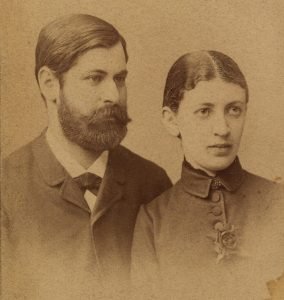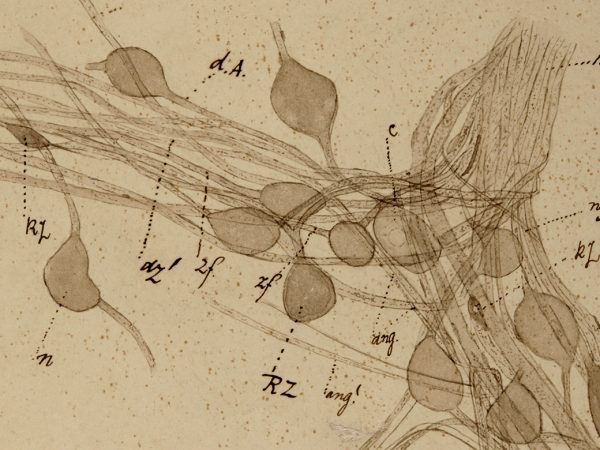
Sigmund and Martha Freud, 1886
In 1882 Sigmund Freud met Martha Bernays and immediately fell in love with her.
They were engaged in secret two months later, but were not married until 1886. In order to support a family, he had to train as a doctor.
Freud at the Vienna General Hospital
In July 1882, Freud took up a junior position at the Vienna General Hospital, doing the equivalent of what today would be called a residency.
For the next three years, he lived on the hospital grounds, rotating through various departments: surgery, internal medicine, dermatology, ophthalmology, psychiatry and neuropathology.
He soon gained a reputation for his ability to determine the exact location of a brain lesion, using only the records of a patient’s symptoms and his knowledge of the nervous system.
By the time he left the hospital in 1885, he had reached the rank of privatdozent (visiting lecturer) in neuropathology.
Psychiatry in pre-Freudian Vienna
Freud studied psychiatry under Theodor Meynert, a leading figure in this growing field.
Meynert was a brain anatomist: he wanted psychiatry to be a purely biological science, believing madness to be located in the brain.
“For Meynert, brain disease was the sole cause of mental disorders; psychological factors were irrelevant.”George Makari
Meynert’s views would today be described as reductionist, because he reduced all psychological experience to brain activity. He gave little credence to the importance of patients’ life experiences, and he had no private consulting rooms in his hospital clinic. All the doctors discussed the patients’ cases in the open, with no confidentiality whatsoever.
During the early 19th century, psychiatrists kept patients in locked institutions for long periods and frequently provided no treatment at all. The patients had little privacy and languished on large, crowded wards, sometimes strapped to their beds.
As the century progressed, new forms of treatment were developed. State-sponsored and private asylums were built all over Europe, but until Freud developed psychoanalysis, most psychiatrists would’ve found what we now call ‘talk therapy’ absurd.
Freud as a doctor
The Vienna General Hospital also gave Freud first-hand experience of working with sick people, something that had not been part of his previous training.
In the Viennese medical tradition, patients were often reduced to objects of a biomedical gaze, yet in spite of his passion for laboratory research, Freud was a caring and compassionate doctor.
The record of his compulsory military service in 1886 describes him as ‘very considerate and humane’ in his treatment of patients, perhaps a sign of the value he would come to place on the lived experience of his patients.
In spite of Freud’s deep immersion in science, medicine, and laboratory research, he gradually came to develop psychoanalysis – the ‘talking cure’ – as an antidote to medicalised approaches to psychological suffering.
Discover more:

Previous chapter
The Young Anatomist
Freud first trained as scientific researcher, studying tissue samples under the microscope.

Next chapter
From Medicine to Psychoanalysis
The standard narrative is that Freud's early psychoanalytic breakthroughs led him to abandon neurology and medicine - but this isn't entirely true.